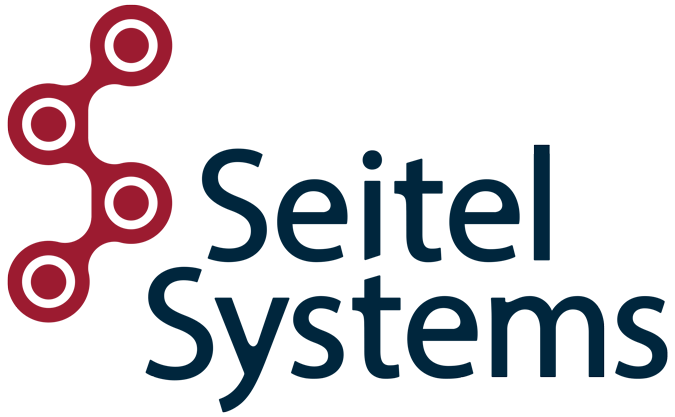This article gives a SharePoint comparison– highlighting the primary differences between a hosted SharePoint Online environment and an On-Premises* installation. Seitel Systems designs and implements network environments incorporating a wide variety of on-prem and cloud-hosted solutions. SharePoint isn’t the “right” answer for all businesses; but if it is, then it is important to understand the differences and what each brings to the table.


In June 2011, Microsoft officially launched Office 365, a set of Software as a Service (SaaS) solutions that allow any organization to have cloud-based access to Exchange, Lync (now Skype for Business), Office Web Applications and SharePoint Online.
Although initially hesitant to migrate away from their familiar on-premises systems, many businesses are increasingly moving toward a cloud-based IT infrastructure model. E-mail migration is the most common first step into cloud services, due to the relative ease and familiarity of non-hosted email accounts.
However, many businesses stop there and don’t consider that file storage and document collaboration can also be hosted remotely – even as services such as Google Docs, Dropbox, Box.net and others are becoming commonplace both in business and on a personal level. Microsoft’s solution to this changing market is SharePoint Online, which integrates with Office 365.
SharePoint Environments
Before deep-diving into the discussion regarding on-premises versus cloud, it is important to note that the most significant difference is the impact to internal staff. An on-premises installation of SharePoint is an extensive platform known for requiring multiple avenues of support including people, infrastructure, software and knowledge of multiple additional technologies and ideologies (i.e. Windows Server, SQL Server, IIS, .net, PowerShell, backup, disaster recovery, networking, high availability, etc.). Implementation of a cloud solution reduces the number of internal dependencies, providing for better redundancy and availability.
Primary differences between SharePoint On-Prem and O365:
| On-Premises | O365 |
| SharePoint servers reside within a corporate network, allowing for ease of access and control. | SharePoint sites reside within a Microsoft Data Center (MDC); controlled by Microsoft personnel. |
| Support is provided by internal staff and patching is dictated by local policies and procedures. | Support is provided by Microsoft and patches are done on a regular, rolling schedule. |
| Availability is determined by internal HA/DR procedures. | Microsoft maintains an SLA of 99.9% uptime. |
| Speed of SharePoint is dictated by local infrastructure. | Global network of data centers provided lower latency and high bandwidth. |
| SharePoint environment can be customized at-will provided the company has a development staff. | Support is provided for client-side object and application model but customization is highly limited. |
| Enterprise integration is available via services such as BCS, PowerPivot, Performance Point, etc. | Integration with other Microsoft cloud-based services. |
In summary, a cloud-hosted environment reduces the burden on your in-house IT resources since Microsoft maintains it for you. This makes SharePoint much more affordable, putting it within reach for small to medium sized businesses. This gives smaller organizations a powerful tool that can improve workflows and save both money and frustration. However, the tradeoff is a reduced level of customization, so larger organizations with complex needs are likely to still require an on-premises solution. It’s important to examine the features that your business will need before you make a decision.
SharePoint Feature Comparisons
The base functionality for both On-Premises and O365 SharePoint remain the same, but there are several distinct differences in regards to their features which can ultimately be the determining factor in how SharePoint will be used.
| Category | On-Premises | Online |
| Cost | Acquisition and maintenance of hardware, software and licensing. | Per-user subscription based on Office 365 plan. |
| Infrastructure Deployment / Maintenance | IT support team to deploy and manage servers. Updates and patches may be infrequent depending on internal schedules. | Environment is managed by Microsoft. All updates and patches are deployed based on their cycle. |
| Disaster Recovery / Business Continuity | Dependent on internal capabilities, policies and procedures. | Microsoft built-in redundancy and failover for data centers. |
| Customization and Development Options | Full support for server side code and client side code. Full trust solution can be deployed to the SharePoint farm. | Full support for client side customization. Full trust solutions cannot be deployed; only Sandbox solutions up to site collection level. |
| Information Security | Dependent on internal capabilities, policies and procedures. | Information in MDS meets industry-specific security standards. |
| Compliance Standard | Dependent on internal capabilities, policies and procedures. | Verified by third party authors. |
| Storage Needs | Potentially expensive storage devices but with scalable storage sizes for site collections. | Cheap storage cost depending on user licensing. |
SharePoint On-prem vs Online: Pros and Cons
As with any IT solution, it is important to assess both the pros and cons and make the best decision based on the available tools and information. Here is a quick summary:

SharePoint On-Premises Pros and Cons |
|
| Pros | Cons |
| Ability to control performance | Cost associated with IT staff, hardware, software, licensing, etc. |
| Bandwidth based on internal network | Geographic redundancy costs and DR dependencies. |
| Ability to scale up / out | Cost of scale up / out |
| Fully customizable | Cost and configuration associated with external collaboration |
| Full access to Windows/SQL servers. | Patching and updates for servers/software. |
| Ability to migrate data between farms without using third-party tools. | Remote accessibility dependent on network configurations. |
| Seamless Single Sign-On integration with Active Directory. | |

SharePoint Online (Office 365) Pros and Cons |
|
| Pros | Cons |
| Microsoft SLA for 99.9% uptime | No end-user recovery. Slow recovery SLAs |
| Minimal impact on internal IT resources. | No access to servers means limited customization. |
| Managed Services (SaaS) | Limited integration with internal services. |
| Short release cycle for patching / updates. | No ability to test patches / updates prior to release into production. |
| Cost based on subscriptions (Pay as you go) | Additional storage costs if large amounts of data. |
| Geographically redundant with multiple data centers. | Potential for costs associated with ISP bandwidth. |
| Accessible from any location with internet connection. | Requires additional sign-on / login. |
It is important to note that employing a cloud-strategy is almost always forward-thinking. Cloud services are available from any location from any device. However, with respect to SharePoint, cloud-based functionality is still somewhat limited for companies who wish to fully customize their deployment. This is likely to change as SharePoint Online matures, but both the short-term and long-term costs must be weighed.
* P.S. Yes, we know that Microsoft’s official terminology for onsite servers is “on premise” instead of “on premises.” But our resident grammarians won’t let us get away with that.
 Seitel Systems is a Microsoft Gold Small and Midmarket Cloud Solutions provider with SharePoint and O365 experts on staff. Read more about our Collaboration Practice and Contact Us if you’d like to learn more.
Seitel Systems is a Microsoft Gold Small and Midmarket Cloud Solutions provider with SharePoint and O365 experts on staff. Read more about our Collaboration Practice and Contact Us if you’d like to learn more.

